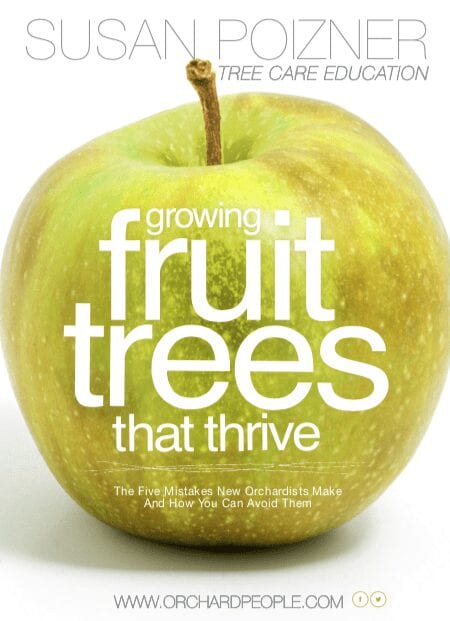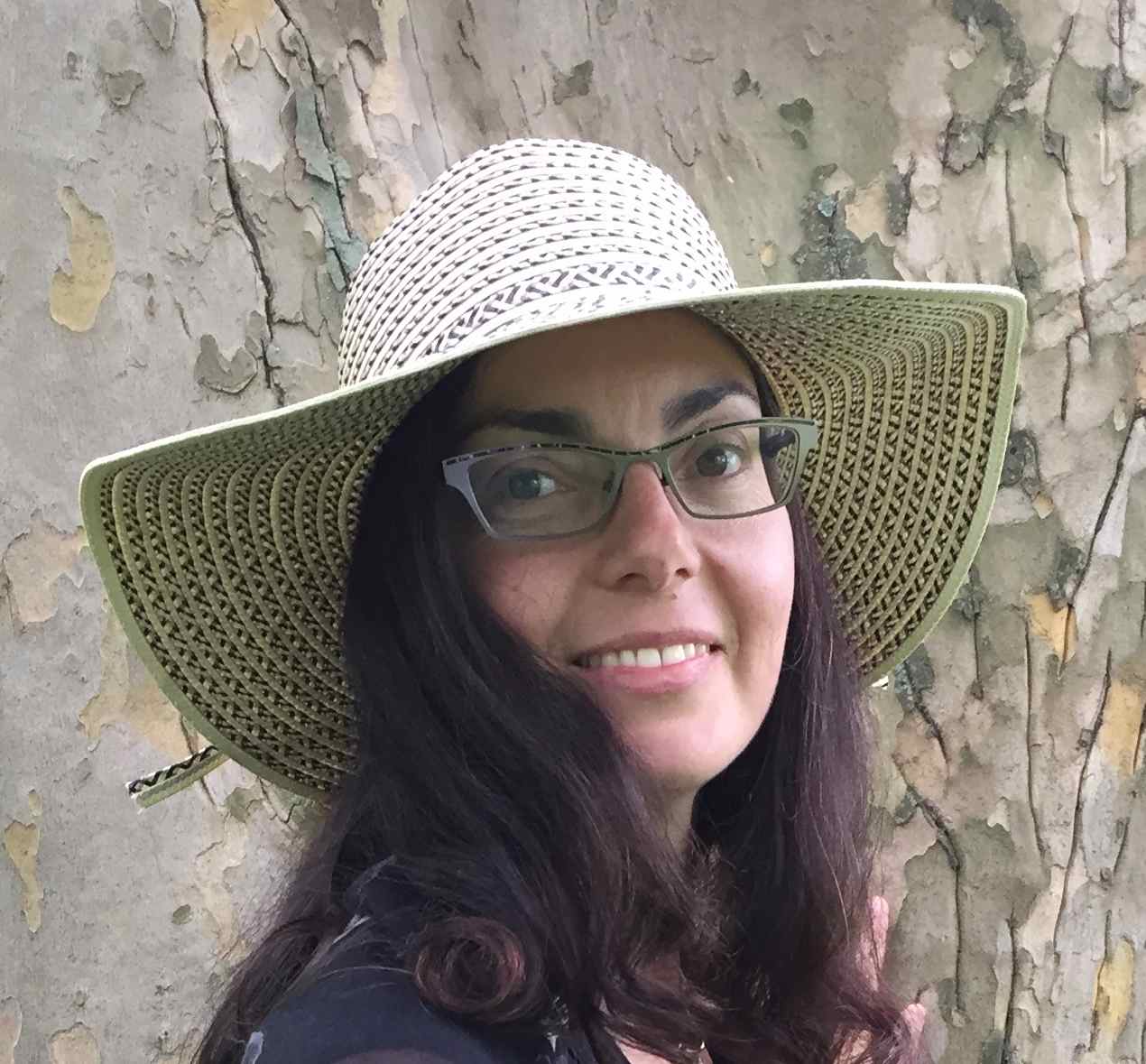
Whether you have a few fruit trees in your garden, or whether you are cultivating an orchard or food forest, planting anything that doesn’t fruit might feel like wasted space. But what if planting certain shrubs or trees supported your fruit trees’ growth?
According to permaculture expert Stefan Sobkowiak planting nitrogen-fixing trees or shrubs alongside your fruiting trees can eliminate the need to fertilize.
Stefan tore up his 4000 apple tree monoculture in order to design and replant a diverse permaculture orchard that includes one nitrogen-fixing tree for every two fruit trees. He says that thanks to the nitrogen fixers, he hasn’t used any fertilizer.
But does this really work? In this article, we are going to unpack the science behind using nitrogen-fixing trees to decide whether it’s worth a try. So let’s get started!
The Importance of nitrogen-fixing Trees: What Do They Do?
Plants need nitrogen to grow. The earth’s atmosphere is made up of a mixture of gasses including lots of nitrogen. While most plants can’t use atmospheric nitrogen, a small minority of plants are able to take in that atmospheric nitrogen and change it into a plant-accessible form. This is called nitrogen fixation.
Here’s how it works: specific soil bacteria team up with plants. These bacteria settle into the plant’s roots and form nodules. The nodules act like tiny factories where the bacteria convert atmospheric nitrogen into ammonia, a form of nitrogen plants can use.
In return, the plants feed these helpful bacteria by releasing sugars into the soil through their roots. It’s a win-win: the plants get usable nitrogen, and the bacteria get food.
But nitrogen-fixing bacteria are fussy! Each type will only team up with certain plants. Even with the right bacteria, some stop converting nitrogen when the plant is stressed. So if you don’t have the right bacteria or soil conditions, your nitrogen fixer might not fix anything.

Checking Up on Your nitrogen-fixing Team
Checking up on the team is easy for pea family plants and other nodule-forming species- just dig around the nitrogen-fixing plant’s roots and look for the nodules:
- If you don’t see nodules, you may not have the right type of bacteria in the soil: a Pan African Conservation Education Program fact sheet states that in this situation you can add bacteria to your soil by purchasing the right type from a nursery.
- If you see nodules, observe their color: according to an article from the New Mexico State University’s website, nodules on pea family plants are pink or reddish when they’re producing nitrogen and white white they’re not.
Free Nitrogen for Your Fruit Trees – or Competition?
The agroforesty industry agrees that nitrogen-fixing trees and shrubs share some of their fixed nitrogen with neighboring plants. They say that when the leaves, fruits and roots of nitrogen-fixing trees decompose, they add plant-accessible nitrogen into the soil.
But will enough of that nitrogen make it into surrounding fruit trees to help them grow? The results differ depending on the type of tree and who carried out the study! Here are some examples:
- Studies of nitrogen-fixing trees interplanted with cashews and mangoes, black walnuts and Oriental arborvitae showed that nitrogen-fixing trees increased neighboring tree growth.
- A study of northern pecans interplanted with nitrogen-fixing trees showed that the nitrogen fixers either had no effect or decreased the growth of neighboring trees due to competition for water, nutrients and sun.
- Two studies of willow and forage crops interplanted with nitrogen-fixing shrubs showed that the nitrogen fixers both increased and decreased the growth of the other plants depending on soil conditions and plant spacing.
So, the moral of the story is that nitrogen-fixing trees and shrubs are capable of increasing the growth of surrounding trees as long as the nitrogen fixer doesn’t outcompete the other tree.
Designing with and Caring for nitrogen-fixing Trees
If you want to get this right, you need to play an active role in planning for and managing your nitrogen-fixing trees and shrubs in the following ways:
- Placement: Pick the right spot for nitrogen fixers based on their mature size. For instance, if you live in the Northern hemisphere, don’t plant a big nitrogen fixer south of your fruit trees as it’ll block their sun.
- Spacing: Keep nitrogen fixers neither too close nor too far from fruit trees. It’s hard to know the exact distance but one study found the optimal growth of forage crops when they were planted 13 ft (4 m) from Siberian peashrubs.
- Watering: Irrigate fruit trees as necessary. There is the risk that the nitrogen-fixers will hog the moisture, leaving fruit trees dry. Plants absorb nutrients in liquid form, so proper watering ensures nutrient uptake.
- Pruning: Fruit trees need annual pruning in order to thrive. But Nitrogen-fixing trees also need pruning…in the latter case it is a way to get these trees to release nitrogen into the soil. We’ll dive into that next.

Pruning nitrogen-fixing Trees
Pruning can turn a potentially competing tree into a fruit tree ally. Stefan says that each time you remove a branch from a nitrogen-fixer, a connected root will die and the nodules on that root will decompose and release nitrogen into the soil. This gives nearby fruit trees a boost with a fresh supply of nitrogen.
At Stefan’s commercial permaculture orchard, Miracle Farms, he makes the big pruning cuts in the winter when the trees are dormant and smaller cuts in summer and early fall.
Although Stefan admits that there hasn’t been much research on the subject, at least one study, looking at coffee plants grown with an overstory of nitrogen-fixing trees, shows that when the nitrogen-fixing trees are pruned, the coffee plants benefit from the nitrogen they release.

Fruit Tree Care Newsletter
Sign up for our monthly newsletter and we will send you our eBook “Growing Fruit Trees That Thrive.” You can unsubscribe at any time.
Choosing the Best nitrogen-fixing Tree for Your Garden or Orchard
If you are going to try a nitrogen-fixing tree, you may want to consider the following questions:
- Which Trees Fix Most Nitrogen? Check out Eric Toensmeier’s excellent chart for nitrogen-fixing rates of different trees. Remember, their effectiveness also depends on soil conditions (like moisture, temperature, and fertility), plus threats like disease and insects.
- Which Grow Vigorously? Stefan Sobkowiak says the best choice is the tree or shrub that thrives in your area, growing fast. More growth means more pruning, which leads to more nitrogen release in the soil.
- Are Any Trees Invasive? Avoid nitrogen-fixing trees known to be invasive in your area. These could outcompete native trees.
- What Other Benefits Can They Offer? Consider what else you want from your tree. Some might feed wildlife or can be used medicinally, while others are simply beautiful. Choose one that offers multiple benefits.
- What’s My Role? To maximize nitrogen fixation and avoid competition, circle back to the earlier sections on design and management strategies.

Examples of nitrogen-fixing Trees and Shrubs
There are so many options in terms of possible nitrogen-fixing trees for your garden or orchard. Here are just a few possibilities:
European Alder (Alnus glutinosa)
- Zone: 4- 5, fast growth, 35- 45 ft (11- 14 m), wide range of soil conditions and water, part to full sun
- Used for medicine, mulch, erosion control, wildlife food, pollinator plant, hedge, windbreak, ornamental
Siberian Peashrub (Caragana arborescens)
- Zone: 2- 7, fast growth, 10- 16 ft (3- 5 m), well-drained soil, tolerates poor conditions, alkalinity, salt and drought, part to full sun
- Used for erosion control, windbreak, pollinator plant, cover for wildlife, seeds are used for chicken feed
Honey Locust (Gleditsia triacanthos)
- Zone: 4-7, fast growth, 50- 75 feet (15- 23 m), tolerates a wide range of soils and amounts of water, full sun
- Used for wood, edible seed pods for domestic animal forage and wildlife, pollinator plant, erosion control, windbreak, ornamental
Seabuckthorn (Hippophae rhamnoides)
- Zone: 3- 7, medium growth rate, 6- 10 ft (3- 5 m), well- drained sandy or loamy soil, dry to medium water, full sun
- Used for seabuckthorn’s edible berries, essential oil, medicine, soap, wood, erosion control, domestic animal forage, chicken feed, windbreak, hedge, ornamental
Goumi (Elaeagnus multiflora)
- Zone: 4- 9, fast grower, 6- 10 ft (3-5 m), tolerates a wide range of soils and stressors, medium water, full to part sun
- Used for edible berries, hedge and ornamental flowers
Nitrogen Fixers: Permaculture in Action
So, are the potential benefits of planting nitrogen-fixing trees worth the space they take up in your garden or orchard? Well, that’s for you to decide. But, if you want to reap their benefits, remember that planning and management is key.
| Other Benefits of Nitrogen Fixing Trees for Your Orchard |
|---|
| ✔ Nitrogen Fixing trees are often “pioneer plants” that survive in poor soil when other plants cannot. |
| ✔ Nitrogen Fixing trees often have extensive root systems that can break through and aerate hard, dry soils, making it more hospitable to other types of plant life. |
| ✔ Some nitrogen fixing trees can act as protective windbreaks or can act as living fences. Once mature, they can be used as supports for vines like hardy kiwi. |
| ✔ Nitrogen-fixing trees form a symbiotic relationship with beneficial soil bacteria that can pull nitrogen out of the air and store it in nodules in the tree’s root system. |
| ✔ Nitrogen fixing trees for orchards provide food and habitat for pollinators and beneficial insects that prey on insect pests. |
| ✔ There are also nitrogen fixing cover crops that are tilled into the soil. There have been many studies showing how cover crops can improve soil quality. |
| ✔ Choose and manage your nitrogen fixing trees for your orchard carefully. Some can become invasive in certain regions and compete with native plants. |

Susan Poizner
Director, OrchardPeople.com Fruit Tree Care Education Online
Susan Poizner is an urban orchardist in Toronto, Canada and the author of three books on fruit tree care including Grow Fruit Trees Fast, Growing Urban Orchards, and Fruit Tree Grafting for Everyone. Susan trains new growers worldwide through her award-winning fruit tree care training program at Orchardpeople.com. Susan is also the host of the Orchard People radio show and podcast and is an ISA Certified Arborist.
#Nitrogen #Fixing #Trees #Orchard




